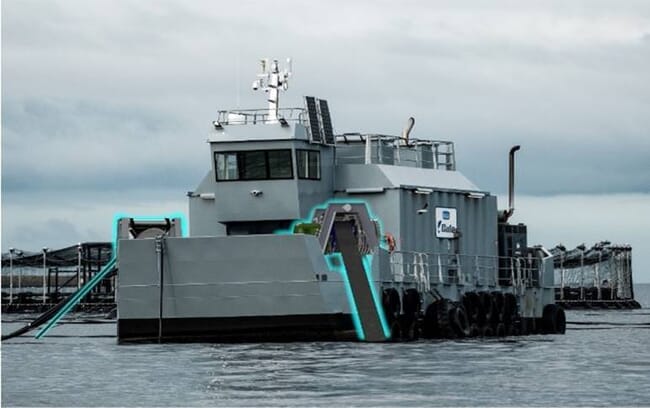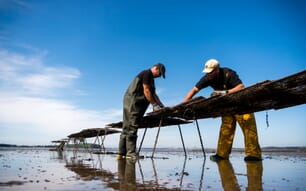Carnegie Clean Energy is launching its MoorPower scaled demonstrator project in conjunction with the Blue Economy Cooperative Research Centre. It aims to offer a clean and reliable alternative for offshore activities, reducing reliance on diesel generators. According to Carnegie, he initial target market is offshore vessels such as feed barges for the aquaculture sector, but the future market is broader and includes the many other offshore operations that require energy.
Over the next two years, Carnegie aims to design, install and operate a scaled demonstrator of the MoorPower technology near its headquarters and research facility in North Fremantle, Western Australia. The project will be delivered with funding support from the Blue Economy CRC and in close collaboration with a consortium of partners, including two of Australia’s largest aquaculture companies, Huon Aquaculture and Tassal Group.

© Carnegie Clean Energy
Academic and industry partners include DNV GL Australia, Advanced Composite Structures Australia, University of Tasmania, Climate KIC/Australian Ocean Energy Group, AMC Search and University of Queensland. The project is supported by $1.35 million cash from the Blue Economy CRC, $265,000 in cash from Carnegie and $1.8 million of in-kind support from all the project partners.
As the aquaculture sector moves operations further offshore, operations such as feed barges will no longer have access to shore-based power and the reliance on diesel generators comes with many associated costs, carbon emissions and environmental risks, including fuel storage and spillage risks while refuelling offshore.
This challenge presents an opportunity to utilise wave energy, an untapped energy source constantly flowing around offshore facilities. Ocean Energy Europe (OEE) forecasts significant growth for wave energy with a €653 billion market potential by 2050.
Carnegie will continue to collaborate with key aquaculture companies to understand their requirements, constraints and challenges. Additional aquaculture technology providers, such as companies that build feed barges, are also supportive of the MoorPower project. Carnegie’s vision for the product is that the technology will be an integrated solution with other offshore renewable energy systems, including hydrogen and batteries.
The core technology has a submerged buoy that sits a few metres below the surface of the ocean, moving with the waves. This orbital motion drives a Power take-off (PTO) system that converts the wave motion into electricity energy.
"We look forward to the opportunities the MoorPower technology presents to the aquaculture sector and the expansion into high energy offshore sites utilising clean and reliable energy solutions. The project allows the opportunity for collaboration between experts in the field led by Carnegie Clean Energy together with project partners across the country,” said Dr John Whittington, CEO of Blue Economy CRC, in a press release.
Mark Asman, head of aquaculture at Tassal Group, added: “As population increases, wild harvest stocks decrease, and farming land and freshwater is restricted, aquaculture is providing a source of renewable protein farmed through sustainable practices. Partnerships like this ensure our industry continues to deliver the benefits of high- performance sustainable innovation, research and development (R&D) and change practices.
“Through the introduction of novel oceanic renewable energy sources, aquaculture will continue to offer healthy seafood produced with a low carbon footprint.”




